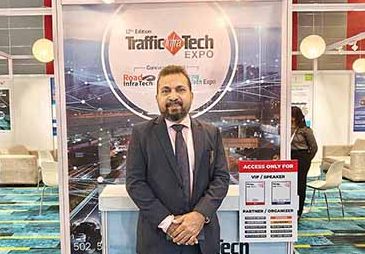The Indian automotive industry consumes around 70% of the forgings produced in India. Asheet Pasricha, President, Association of Indian Forging Industry (AIFI) told Leon Martin Ray about the forging industry in India and the way ahead for the sector. Edited excerpts:
How many forging units are there in India and what is the percentage of the large, medium-sized and small units?
There are 419 units identified in existence by the AIFI, which have been classified into five categories as per their installed capacity, in line with the classification criteria followed globally, which is very large, large, medium, small and very small. As is the case across world, a very high percentage of units – around 85% are either small or very small, with only 5% being very large and large units as per the classification criteria, with the balance being medium in size. The very large, large and medium-sized units making up for 15% contribute 65- 70% of the production of forgings in India.
What is the contribution of the forging industry to the automotive sector?
The automotive industry consumes around 70% of the forgings produced. And in tune with the rapid changes that are taking place in the automotive sector, the forging industry has maintained its investments towards technology upgradation. Meanwhile, it has also been diversifying its product profile into the non-automotive sector, both for domestic and international requirements, including aerospace, power, energy, oil & gas, and heavy marine engine parts. The organised sector continues its efforts to acquire the latest technologies with added emphasis on CAD/CAM, simulation, semi-automatic and automatic manufacturing lines and other forms of computer-based technologies to improve productivity and match international standards so as to move towards better yield ratios.
How will the government’s thrust on infrastructure help the forging industry?
The government’s announcement in the Union Budget 2015-16 to boost infrastructure growth will provide the much needed impetus and hopefully address the urgent need for sustainable infrastructural development in India. The overall economic growth of any country hinges on sustained and continued investments in infrastructure to meet the requirements of a growing economy. We in India have experienced the implications of a drop in investments in infrastructure, wherein our growth rate dropped from about 9.5% to below 5% over the last 5 years. Currently the industrial and general sentiment is positive on account of the BJP and its allies getting an absolute majority in the last Lok Sabha elections. The strong reform announcements made periodically in addition to the direction of reforms, stated during the presentations of both the railway and the union budgets, Indian economy is now on the upper swing.
As the on-ground implementation or roll out of the projects and measures announced has been very slow, one gets the impression that the industry in general is waiting and watching from the sidelines – waiting for progress on environmental clearances on pending projects, land acquisition, taxation and mining reforms. Apart from these, major focus and fund allocations are required for expansion and refurbishment of the existing infrastructure. The government must permit expansion of existing ports and power plants within the available land banks without restriction as this would be less damaging both to the people nearby and aquatic life to building new facilities. Till such time that these measures are rolled out with definite timelines, expecting an upswing in investment and manufacturing would be very optimistic.
Does the industry continue to be labour-intensive?
The industry is and will remain labour-intensive. It is estimated that this industry provides direct employment to about 95,000 people in the country. However, the scarcity and increasing employment costs in addition to a general rise in manufacturing cost with the need for enhanced quality requirements have forced the industry to look at automation at different levels to remain economically viable. The small-scale units too are investing in simple automation in an effort to keep their manufacturing costs under control. This though is not a very good sign for a country with high unemployment as well as under-employment, It is my personal opinion that the medium and small-scale sector could sustain economically if they were given the freedom to take appropriate disciplinary measures.
What is the capacity utilisation of the Indian forging companies?
The industry’s total production capacity was about 37.7 lakh in FY2012- 13, according to a survey conducted by AIFI. At present the automotive forgings’ segment has only 61% capacity utilisation and further demand could still be met with the existing capacities. As far as industrial applications are concerned, these account for about 39% of the industry and the sector would see fresh capacities kicking in during fiscal 2015-16.
What is the value of exports?
India exported forgings valued at around Rs 5,400 crore. The exports could have been much higher if Europe had not continued to face volume pressures in the automotive sector and investments in shale gas extraction had not slowed to all but a trickle in the US on account of the declining prices of crude.
Have there been any collaborative ventures with foreign forging companies?
There have been a few collaborative ventures between Indian and foreign companies, examples being Sona Koyo Steering Systems Ltd. which is the result of a joint venture between Sona Group and JTEKT Corporation of Japan, Mahindra Forging and CIE Automotive of Spain, and also some foreign companies that have invested in manufacturing facilities in India such as Hirschvogel at Chakan near Pune and CIE Automotive through the acquisition of Mahindra Forging. Indian forging companies like Amtek Auto, Bharat Forge, Sundaram Fasteners, Mahindra Forging and some others have been investing in mergers and acquisitions overseas, primarily in Europe and to some extent in the US.
What about technology sharing with foreign companies?
Technology sharing and absorption is primarily through international acquisitions of companies.
How supportive is the Indian government of the forging sector?
AIFI has been seeking the creation of a technology upgradation scheme to enable quicker economical upgradation of technology within the industry, primarily for the medium and small-scale units through periodic representations to the Government of India along with granting of incentives in line with those given to the exporters of forged products by our neighbouring countries to their forging industry. Unfortunately we have had no progress that we are aware of on these fronts. Apart from the above, AIFI appreciates the announcement of a definite timeline to introduce GST, the scrapping MAT, alignment of gas prices with international prices and improved blue collar man power training through upgradation of the ITIs are welcome measures to boost manufacturing on the whole.
How are the low-cost Chinese imports affecting the industry? Is there an anti-dumping duty levied by the government?
No, there is no imposition of an anti-dumping duty by the Government of India. However, imports from China have been stagnant for some time now on account of the depreciation of the rupee versus the dollar. This could however turn dramatically on account of currency rate fluctuations. The government has announced a ‘Make in India initiative and as the Indian forging industry is more than capable of meeting our requirements of forgings, the government must impose import duties on the import of forgings irrespective of the country of origin.
What is the Association of Indian Forging Industry’s current focus on in order to improve the status of the forging industry?
The AIFI has been the voice of the industry, actively communicating with the government bodies on various issues being faced by its members. AIFI is focused on providing avenues to its members to provide exposure and training on the best of practices being followed internationally towards productivity improvement by organising training programs for middle-level management personnel upwards through solution providers to the global forging industry. Recently the Association has proposed to the government that people scrapping their passenger or commercial vehicles should be eligible to replace such vehicles with either zero excise duty or at the most 50% of the prevailing excise duty. Scrapping of relatively old vehicles would not only give a fillip to the automotive industry and in turn to the forging industry but also have a positive effect on the environment.
The Association has also been constantly following up with the government to look into 2 aspects of piped natural gas (PNG) used by the forging industry; first, the price at which PNG is made available should be in tandem with the international price, and second, there should be more than one supplier of PNG in a particular area so that the units have a choice of suppliers. In addition, it continues to play its role of representing the industry with various government and quasi-government ministries and departments.
What is your outlook for the forging industry in the coming years?
Going forward the outlook definitely looks brighter than the last 5 to 7 years. The government has announced its intention of revival of investments in infrastructure and the methodology that would be used. It is true that the implementation process has been slow but there has been some movement. The issues facing the mining industry also are behind us with the successful completion of the auction of the mines. I would not be surprised if the forging industry sees growth rates upwards of 10 per cent from FY16–17 onwards.









Leave a Reply